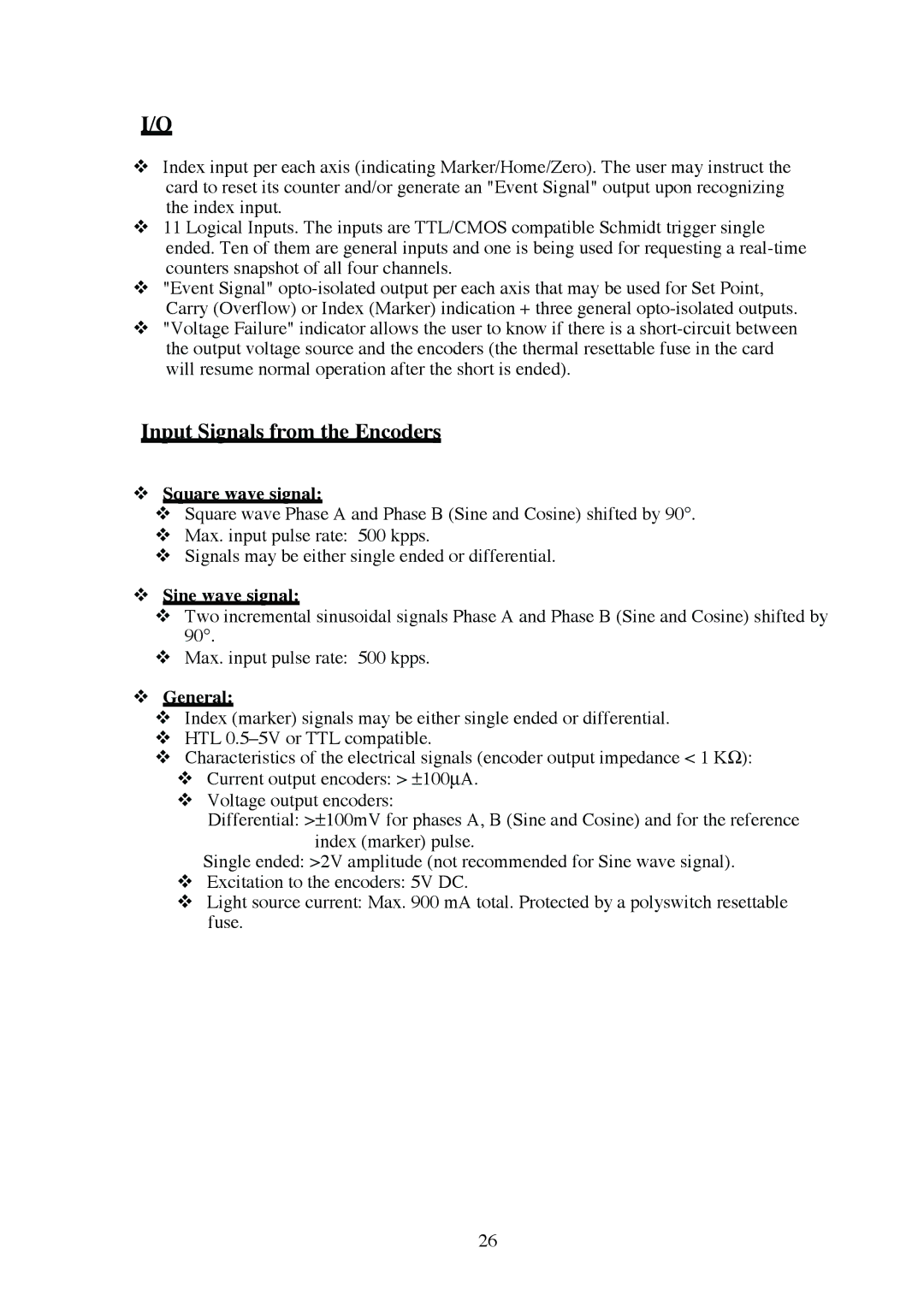
I/O
Index input per each axis (indicating Marker/Home/Zero). The user may instruct the card to reset its counter and/or generate an "Event Signal" output upon recognizing the index input.
11 Logical Inputs. The inputs are TTL/CMOS compatible Schmidt trigger single ended. Ten of them are general inputs and one is being used for requesting a
"Event Signal"
Input Signals from the Encoders
Square wave signal:
Square wave Phase A and Phase B (Sine and Cosine) shifted by 90°.
Max. input pulse rate: 500 kpps.
Signals may be either single ended or differential.
Sine wave signal:
Two incremental sinusoidal signals Phase A and Phase B (Sine and Cosine) shifted by 90°.
Max. input pulse rate: 500 kpps.
General:
Index (marker) signals may be either single ended or differential.
HTL
Characteristics of the electrical signals (encoder output impedance < 1 KΩ):
Current output encoders: > ±100µA.
Voltage output encoders:
Differential: >±100mV for phases A, B (Sine and Cosine) and for the reference index (marker) pulse.
Single ended: >2V amplitude (not recommended for Sine wave signal). Excitation to the encoders: 5V DC.
Light source current: Max. 900 mA total. Protected by a polyswitch resettable fuse.
26
